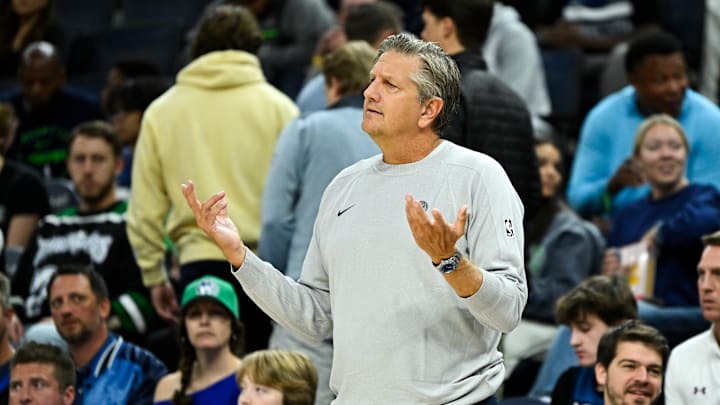The Minnesota Timberwolves' draft strategy of selecting two high upside yet raw big men in Joan Beringer and later Rocco Zikarsky raised eyebrows. On one hand, the Wolves needed to secure a plan for once Rudy Gobert ages out of the timeline. Even with Gobert still in the mix, finding someone who can keep the team afloat during the non-Rudy minutes was a logical priority.
The problem is that developing two raw 18-year-olds is tricky for a team with title aspirations. Personally, I'm fine with one raw prospect; Beringer's upside is undeniable, but I never thought that drafting two was practical. So far, Beringer has just 37 minutes (all garbage time), and Zikarsky has spent all of his time in the G League.
Unfortunately, the Wolves' defense has struggled without Gobert, posting a -19.7 on/off defensive swing per Cleaning the Glass. This highlights the need for another center.
Now it would be foolish to rule out the possibility of either of these players eventually becoming contributors. However, it's fair to say that the Wolves should have taken a safer prospect with one of their picks.
Ryan Kalkbrenner was the most obvious safe pick of all-time, and the second-rounder is thriving with the Charlotte Hornets so far.
The Timberwolves' Ryan Kalkbrenner mistake
Kalkbrenner has flat-out been one of the best rookies this season. The Creighton product is averaging 9.4 points, 6.9 rebounds, and 1.9 blocks while shooting an impressive 80.3 percent from the field. Now I know what you're thinking, Kalkbrenner was the 34th pick while Zikarsky was the 45th pick.
However, let us not forget the Wolves had the first pick of the second-round. Minnesota traded back with the Phoenix Suns five spots and got two second-round picks back in the process. The Wolves traded back again to draft Zikarsky with the No. 45 pick, this time only getting cash back along with the pick.
Listen, I get that cash was a factor, and getting a two-way eligible player in Zikarsky was desirable. However, after picking Beringer in the first-round, the Wolves should have targeted a safer prospect in Kalkbrenner. Staying at 31 and drafting Kalkbrenner would have been logical, or only trading back a couple of spots and drafting him would have made sense.
Hindsight is, of course, 20/20, and I don't want to act like this was simply a bad move because of the early 15-game results. Nevertheless, I had Kalkbrenner in the top 25 of my personal big board, and it was always clear how NBA-ready he was.
Ryan Kalkbrenner would have been perfect for the Timberwolves
Kalkbrenner wasn't a perfect prospect, but he would have been perfect for a Wolves team that was looking to bolster their center depth. At 23, he didn't have the same upside as many of the prospects. For a competitive Timberwolves team, that's perfectly fine, though. In fact, drafting experienced college players who can contribute immediately is ideal.
As a four-time Defensive Player of the Year in college, it was clear that Kalkbrenner could make an immediate impact as a drop coverage style rim protector. I'm not saying he's going to be a historically great defender like Gobert, but he has a similar skill set. Kalkbrenner ranks in the 96th percentile for blocks per 100 possessions per Databallr.
Offensively, Kalkbrenner is an efficient scorer around the rim, especially as a lob threat. He's also an excellent screener. This always made Kalkbrenner a high-floor player. To man the non-Gobert minutes and eventually take over as the starting center, Kalkbrenner would have been perfect.
The non-Rudy minutes have been a key problem all year, but frankly, this wouldn't have been the case had the Wolves drafted Kalkbrenner in June.
